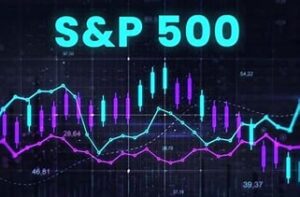The Small Cap Swing Trader Alert Archive
Below you'll find The Small Cap Swing Trader setups stacked up and ordered chronologically.Robinhood Stock Prediction Markets
Robinhood Stock Prediction Markets Fuel Explosive Growth — What Traders Should Know
The online brokerage’s revenue doubled year over year to $1.27 billion, while profit surged 259% to 61 cents per share, beating Wall Street’s estimates. Trading activity surged across equities, options, and cryptocurrencies, driven by a resurgent bull market and a resurgence in retail participation.
Prediction Markets Ignite Robinhood’s Next Phase
CEO Vlad Tenev said the company’s year-old Robinhood stock prediction markets have been the fastest-growing business line in company history. Since their debut during the 2024 presidential cycle, prediction volumes have doubled each quarter. “We handled 2.3 billion contracts last quarter,” Tenev said, “and another 2.5 billion in October alone.”
These markets now generate more than $100 million in annual revenue and are becoming a significant differentiator in the online brokerage space. CFO Jason Warnick added that Robinhood’s eleven business lines each now generate over $100 million per year, proof of what he called “the platform’s durable diversification.”
Expanding User Base and Record Engagement
Robinhood’s user base continues to expand rapidly. The company added 2.5 million new funded accounts in the third quarter, bringing its total to 26.8 million. Transaction-based revenue climbed 129% year over year to $730 million, led by a 300% jump in crypto revenue.
Analyst David Bartosiak of Zacks called the growth “a masterclass in diversification,” describing Robinhood stock prediction markets as “the Swiss Army knife of financial engagement for retail traders.”
Profitability and Leadership Changes
Outgoing CFO Jason Warnick called the quarter another milestone for “profitable growth.” He will retire next year, with Shiv Verma taking over as CFO. Shares of Robinhood (HOOD) fell about 2% in after-hours trading following a 35% rally over the past three months.
“The selloff looks like short-term profit-taking after a parabolic run,” said Brian Mulberry of Zacks Investment Management. “The company is growing fast, but investors need to see how sustainable this growth in Robinhood stock prediction markets really is.”
Implications for Day Traders and HOOD Stock Opportunities
For day traders, today’s pullback in HOOD stock following an earnings beat presents a potentially attractive volatility setup. After-hours weakness near the $19.50–$20.00 zone is testing a prior breakout area. If buying volume returns during the next session, the first upside pivot targets are $21.80 and $23.50; failure below $19.20 could trigger a retest of the $18.50 support level.
Momentum traders should watch for continuation above $20.75, which could align with intraday bullish reversals tied to strength in fintech and AI-linked trading stocks. Conversely, short setups could develop on early pops that fade back into the $19.50 range.
In short, Robinhood stock prediction markets have given HOOD new fundamental momentum — but the technical picture still favors tactical trading around earnings-driven volatility rather than long-term accumulation at current valuations.
Outlook: A Broader Financial Frontier
Tenev reiterated that Robinhood is positioning itself at the crossroads of retail finance, crypto innovation, and market speculation. “Prediction markets are just the beginning,” he said. “We’re democratizing access to every corner of financial participation.”
For now, Robinhood stock prediction markets remain the company’s standout catalyst — and a new frontier for traders looking to profit from the next evolution of retail investing.
Sources: Robinhood Q3 2025 earnings release; Zacks Investment Research; FactSet; TraderInsight market analysis.
Brazilian Potash Mine
Brazil’s Amazon Potash Mine Aims to Secure Fertilizer Independence Amid Global Trade Shifts

Brazil’s Fertilizer Dependence
Brazil’s booming agricultural sector—now the world’s top exporter of soybeans—has long relied on imported fertilizer. Around 90% of Brazil’s nitrogen, phosphorus, and potassium is sourced abroad. The war in Ukraine and Western sanctions on Russia have repeatedly disrupted supply, leaving the world’s largest tropical farming power exposed to price spikes and shortages.
“We have a gift from God here, and we need to make the most of it,” said Raphael Bloise, head of Brazil Potash’s operations. The project could transform Brazil from a vulnerable importer to a regional leader in fertilizer production.
The Promise of the Amazon Potash Basin
The mineral deposits, discovered by Petrobras more than 50 years ago while drilling for oil, stretch over 250 miles beneath the jungle. The Amazon Potash Basin is among the world’s largest known reserves of potassium chloride—remnants of an ancient ocean that dried millions of years ago.
Once operational, the Autazes mine would produce about 2.4 million tons of potash annually, all for domestic use. The deposits could make Brazil largely self-sufficient in fertilizer production, strengthening its agriculture against geopolitical shocks and bolstering its role as a top global food supplier.
Balancing Opportunity and Environmental Risk
The project’s location—deep in the state of Amazonas—poses significant environmental and social challenges. Critics warn that mining infrastructure, such as roads, ports, and power lines, could open new frontiers for illegal deforestation and land grabbing. The mine’s developers counter that producing fertilizer domestically could reduce pressure on forests by allowing farmers to restore nutrient-depleted fields instead of clearing new land.
Indigenous Partnerships and Community Tensions
The Autazes site overlaps parts of the ancestral territory of the Mura people, an indigenous group historically affected by colonial exploitation and illegal mining. After years of negotiations, 35 of the 40 Mura villages in the region have endorsed the project in exchange for social investments in schools, healthcare, and small-scale agriculture.
“Who doesn’t want to drink a glass of chilled water from the fridge, or have a car, or sleep in a room that’s air-conditioned?” said Aldinelson Moraes Pavão, chief of the village of Urucurituba, expressing cautious optimism about the development.
Economic Potential for a Remote Region
The Autazes mine could bring thousands of jobs to a region plagued by poverty and unemployment. Mayor José Thomé Neto said the project could double the town’s population over the next 30 years, adding that “this project will contribute to food security in our country but also a new economic model for the state.”
The company plans to construct a 102-mile power line and a new port terminal on the Madeira River to facilitate the shipment of fertilizer to central farming regions. Chinese investors have shown interest in financing the project, potentially linking potash exports with long-term crop purchase agreements.
A Defining Test for the Amazon’s Future
As world leaders gather in the Amazon for the U.N. climate summit, the Autazes mine encapsulates Brazil’s central dilemma: how to develop its natural resources while protecting one of the planet’s most vital ecosystems. With 30 million people living in the Brazilian Amazon—many of whom live in deep poverty—the stakes for balancing sustainability and development have never been higher.
Novo Nordisk Cuts Guidance
Novo Nordisk Cuts 2025 Guidance as GLP-1 Momentum Cools; Stock Slips After Q3 Miss

Novo Nordisk Cuts Guidance – Quarter at a glance
- EPS: 4.50 DKK vs. 4.90 DKK est.
- Revenue: 75.0 bn DKK vs. 76.5 bn DKK est.
- Wegovy sales: 20.3 bn DKK (vs. 21.2 bn est.)
- Ozempic sales: 30.7 bn DKK (vs. 30.3 bn est.)
- One-offs: ~9 bn DKK restructuring charges tied to ~9,000 layoffs
Updated 2025 outlook
- Sales growth (CER): 8%–11% (from 8%–14%)
- Sales growth (reported): ~4%–7%
- Operating profit growth: 4%–7% (from 4%–10%)
- Drivers: tempered GLP-1 expectations (Wegovy/Ozempic)
Strategy Narrows, Novo Nordisk Cuts Guidance, as Governance Turbulence Persists
New CEO Mike Doustdar said Novo will focus tightly on obesity, diabetes, and related cardiometabolic conditions, exiting “non-core” assets. The declaration follows an unusually tumultuous stretch for the historically steady company, marked by a CEO ouster, a full refresh of the independent directors, and a planned workforce reduction of ~11%.
Metsera Bidding War Raises the Stakes
Novo thrust itself into a bidding fight with Pfizer for obesity biotech Metsera, floating an offer that could reach approximately $ 10 billion. CFO Karsten Munk Knudsen defended the price and pre-approval structure—paying most of the consideration upfront—calling it a function of negotiations and consistent with the sharpened focus on obesity. Pfizer has sued on antitrust grounds; Novo says the deal is lawful.
What’s Slowing—and What Isn’t
After years of “hyper growth,” management stated that GLP-1 expansion is decelerating into Q4, with Wegovy missing its target and Ozempic slightly exceeding estimates. Investors, already unnerved by summer volatility and guidance resets, remain focused on near-term U.S. pricing, capacity, and competitive dynamics versus Lilly.
Policy Watch: Pricing and Coverage
Reports indicate Novo and Lilly are in discussions with the White House over lower prices for small doses and potential Medicare coverage for weight-loss use cases. Knudsen declined specifics, signaling only that “there will be a deal to be announced at some point.” Any framework that expands payer access while preserving margins would be a key catalyst for the GLP-1 class.
Investor Take
- Near term: Guidance trim, restructuring costs, and Wegovy miss = pressure on shares.
- Medium term: Metsera bid could deepen the pipeline, but adds execution, legal, and integration risk.
- Key swing factors: U.S. pricing/coverage outcomes, manufacturing throughput, and Lilly’s launch cadence.
Note: All figures are as reported by the company and industry sources cited in the original coverage; DKK = Danish krone; CER = constant exchange rates.
Bank of America Stock Slides
Bank of America Stock Slides Despite Higher Profit Targets at First Investor Day Since 2011
Bank of America (BAC) shares fell on Wednesday even as the bank’s leadership raised profitability and growth targets during its first investor day in 14 years. The event, held in Boston’s Back Bay, was intended to reassure Wall Street that CEO Brian Moynihan can close the performance gap with rivals such as JPMorgan Chase and Wells Fargo.
The second-largest U.S. bank now targets a return on tangible common equity (ROTCE) between 16% and 18% over the next three to five years, up from 15.4% in the third quarter. The new range met analyst expectations but didn’t ignite enthusiasm—shares were down 1.7% in midday trading even as the S&P 500 rose 0.7%.
Performance Goals and Investor Reaction
Moynihan’s message was clear: responsible growth remains the bank’s north star, but profitability and efficiency will improve. Analysts, however, questioned the time horizon for results. UBS’s Erika Najarian said the longer timeline “raised early rumblings from investors.”
By comparison, JPMorgan Chase reported a 20% ROTCE in the third quarter—highlighting Bank of America’s continued lag behind its peers. Wells Fargo analyst Mike Mayo called the event a potential “sell-the-news” moment, noting the stock had rallied ahead of the meeting. Still, he expects higher earnings and returns to drive future gains.
Efficiency, Credit Quality, and Income Growth
Bank of America said it plans to lower its efficiency ratio—a key measure of profitability—to 55–59%, down from 62% in the third quarter. It also expects its net charge-off rate to hold steady between 0.5% and 0.55% “through the cycle,” indicating stable credit quality.
Meanwhile, net interest income—a primary driver of profitability—is projected to grow at a compound annual rate of 5% to 7% over the next five years, driven by asset repricing and organic expansion.
Repricing Legacy Assets
The bank acknowledged that its low-yielding securities portfolio—a byproduct of pandemic-era investments in U.S. agency mortgages—has constrained performance. Bank of America invested around $500 billion in securities yielding about 2% when the Federal Reserve slashed rates in 2020.
Those assets will finally roll off over the next decade. Between 2026 and 2031, the bank expects $450 billion to $490 billion of those holdings to be reinvested at higher yields. Analysts at Deutsche Bank described this repricing as “a built-in earnings lift” that should fuel better per-share growth starting in 2027.
Rebuilding Investor Confidence
Bank of America’s management team emphasized consistency, long-term profitability, and operational discipline—attributes they argue will drive shareholder value. Yet, many investors remain cautious, comparing its slower growth to faster-moving peers. “In the long run, the stock should follow earnings and returns,” Mayo noted. “Both seem to be heading higher, but it’s a question of patience.”
S&P 500 and Nasdaq Drop
S&P 500 and Nasdaq Post Biggest Drop in Nearly a Month
Tech Stocks Lead the Selloff
The downturn began when Palantir Technologies failed to impress investors despite topping analyst expectations. Shares tumbled after Monday’s record close, sparking a broader retreat in speculative and high-growth assets. A wave of cautious remarks from top Wall Street executives, including Ted Pick of Morgan Stanley and David Solomon of Goldman Sachs, added to the risk-off sentiment.
“After seven consecutive months of gains—the longest stretch in eight years—a pullback may simply reflect natural market rotation or profit-taking,” wrote Mizuho’s Daniel O’Regan. He added that the market’s sudden decline likely signals a “broader de-risking trend” affecting speculative assets, from crypto to AI-linked stocks.
Broader Risk-Off Move
Markets were further weighed down by declines in cryptocurrencies, meme stocks, and other speculative names, suggesting a widespread reduction in risk appetite. The 2-year Treasury yield fell to 3.58%, while the 10-year yield eased to 4.09%, as investors sought safety in government bonds.
Tom Essaye of Sevens Report Research said that until Wednesday, AI stocks had been “masking broader market struggles this earnings season.” He warned that Wall Street’s expectations have become overly optimistic: “The market is priced for perfection—and I mean perfection—and there’s a little bit of a disjointed existence there.”
Market Rotation and Next Steps
Despite the selloff, analysts view the pullback as part of a regular market rotation rather than the start of a deeper correction. “Investors are finally recalibrating expectations after months of exuberance in AI-related sectors,” said one trader. “Valuations had simply gone too far ahead of fundamentals.”
While the S&P 500 and Nasdaq remain near multi-year highs, continued weakness in speculative assets could test market sentiment as investors await upcoming economic data and the Federal Reserve’s commentary.


